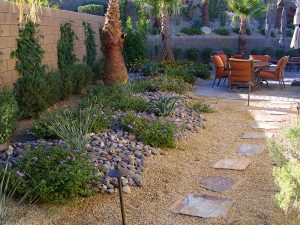By Emmy Ulmschneider
Master Gardener
Back in 2021, (Blog entries 9/12, 9/19, 10/6, 10/6, 10/10) we did a series about native plants and creating habitat in your yard. And if that piqued your interest in the idea of gardening for wildlife, you know that fall is the time for natives. Not only is it the time to plant or sow seeds, it is also the time to ready your garden for winter and enjoy what you have created.
Throughout the fall, the National Wildlife Federation blog for Conservation and Garden Habitats has posted tips on simple ways we can create a welcoming environment for our urban wildlife. So here are five simple steps we can all take to support our migrating and resident birds as well as the butterflies, pollinators, and invertebrates that nurture our soil and plants.
Step 1: Plant NOW! The temperatures in fall are cooler so that the newly planted can recover slowly and the roots have a chance to establish. This means you are giving the plant a head start in the spring. And we may even get rain! Fall is the time to plant native seeds. Many native seeds need a period of cold to germinate. You can do this by putting the seeds in your fridge for period of time or you can sow them directly into the soil and let Nature nurture them! Follow the directions on the seed packet or check out our October 10, 2021 blog article.
Step 2: Provide food and cover! And by food and cover we are not talking about bird feeders and bird houses! Food and cover are best provided by native plants that are found in our area. The more you plant the more food and cover you will have. Shrubs provide excellent cover year-round and if they fruit, are dual purpose providing both relief from predators and cold as well as a much-needed winter food source. In spring, they may also provide a nesting site. We have many beautiful native shrubs to choose from that do well in prairie to wooded habitats. When they are blooming perennial wildflowers provide nectar for insects and birds.
Step 3: Reduce fall cleanup! Not only does this reduce your workload but it benefits urban wildlife.
- Leave the leaves! Instead of bagging them, rake them into garden beds to release nutrients, retain water and create habitat for our native insects including our showy butterflies and moths. You will also be improving your soil structure and reducing your impact on the landfill.
- Leave your deadheading and perennial trimming until you take down the garden in early spring. Birds can utilize the seeds and berries that remain on the stalks and hollow stems provide winter homes for pollinators and beneficial insects.
- Don’t over mulch. Deep mulch layers mean wildlife can’t access the soil for food and shelter.

Step 4: Plan for next year! Do some reading about the why’s and how’s of providing habitat. Here are many, many websites, and books to get you started. Talk to a neighbor who grows native plants. Look into certifying your yard with National wildlife Federation, Xerces, North American Butterfly Association or Homegrown National Park. Bring your yard to life and you will not regret it.
Step 5: Enjoy Fall! A garden habitat is for urban wildlife and the humans who support it. Get outside, reap the benefits of being in Nature. And there are many. Monarch migration is almost over but look for migrating and resident birds. And better yet, find some outdoor fun for you and children of all ages. Go on a scavenger hunt or a family nature walk in your backyard. Try making leaf prints or see how many colors you can find. Gather acorns or seeds to make figures to play with.
The possibilities for a backyard habitat are boundless and limited only by your imagination. And what a way to introduce your family to the natural world around us.
If you have questions, call the AgriLife office in Odessa at 498-4071 or in Midland at 686-4700. Additional information, and our blog for access to past articles, is available at westtexasgardening.org. Click on “Resources.”




